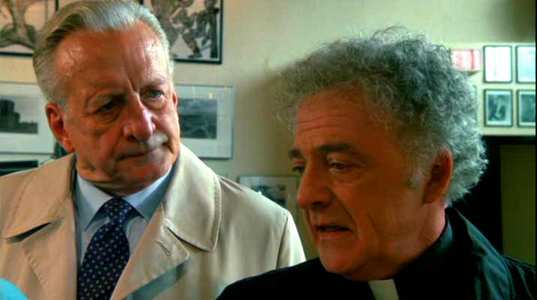Help My Unbelief, by Reed Lackey
22 Jan
Sequels are continually regarded, however unfairly, as automatically inferior films. Recent entries in the superhero and science fiction genres have rebuked that stigma, but they’ve not abolished it. It is particularly challenging to craft a sequel to a film which is regarded as a landmark. So when William Peter Blatty set out to direct a third sequel to the legendary horror classic, The Exorcist, it seemed a matter of incredible folly.
Exorcist II: The Heretic had completely bombed, seeking to capitalize on the original’s groundbreaking success and iconic placement in the horror genre, it lacked any thematic or narrative understanding to connect to what made the original so impactful. But this time, the original writer would not only be directing the new film, he’d be adapting it from his novel, Legion, which had been a printed sequel to the original Exorcist.
The Exorcist III focuses on the character of Detective William Kinderman, who had investigated the murders connected with the original possession of Regan MacNeil from the first story. The story takes place fifteen years after the original events. Father Dyer, who gave the last rites to Father Karras before he died having saved Regan, is now friends with Detective Kinderman and they meet monthly to share stories, questions, and memories with one another. But now, Kinderman is particularly haunted by a recent stream of murders which appear ritualistic in nature, and evoke a killer long believed to be dead. Compounding his terror is the revelation that a patient in a local mental asylum looks just like the deceased Damian Karras.
The film is far more thoughtful than you’d expect from a horror story, although there are plenty of atmospheric frights (and at least one jump scare that is so effective it’s become notorious). It focuses on Kinderman’s unbelief, and the severe doubt he has that there is any good in the world at all, let alone any God. Father Dyer actively guides him along this path, but when he finds himself in the killer’s path, Kinderman must face the evil alone with all of his doubts.
Playing Kinderman with appropriate gravel and spark is George C. Scott, an ever-charismatic and often turbulent performer who brings just the right levels of rage and bitterness to the role. The film also heavily features an interesting turn by Brad Dourif, as a maniac who may or may not be possessing the body of Damian Karras. The mystery at the film’s core may ultimately prove unsatisfying to audiences once all is revealed, but it is to be commended for not compromising its bleak thematic exploration.
Blatty clearly wanted to examine the darkest elements of the problem of evil, and this film is not as balanced by moments of tenderness or hope as the original Exorcist was. It is a look at faith through the lens of the unbeliever, who sees only the wickedness and cannot bring himself to believe in anything else. In one of the film’s most affecting and powerful moments, the possessed villain promises to help Kinderman with all of his doubts, and Kinderman’s passionate declaration in response is one of the most provocative and honest reactions to the problem of evil I’ve ever heard. Perhaps the path to believing in goodness might sometimes begin by acknowledging a belief in wickedness.
It’s a bleak film, and technically stilted at times, never quite sure if it wants to be a thoughtful conversation or a pulpy fright fest. But it is also highly compelling and a fascinating follow-up to any fans of the original film. It is rumored that heavy studio interference compromised Blatty’s ultimate vision, but what remains is still immensely interesting and worth the effort it demands from its viewers.




No comments yet